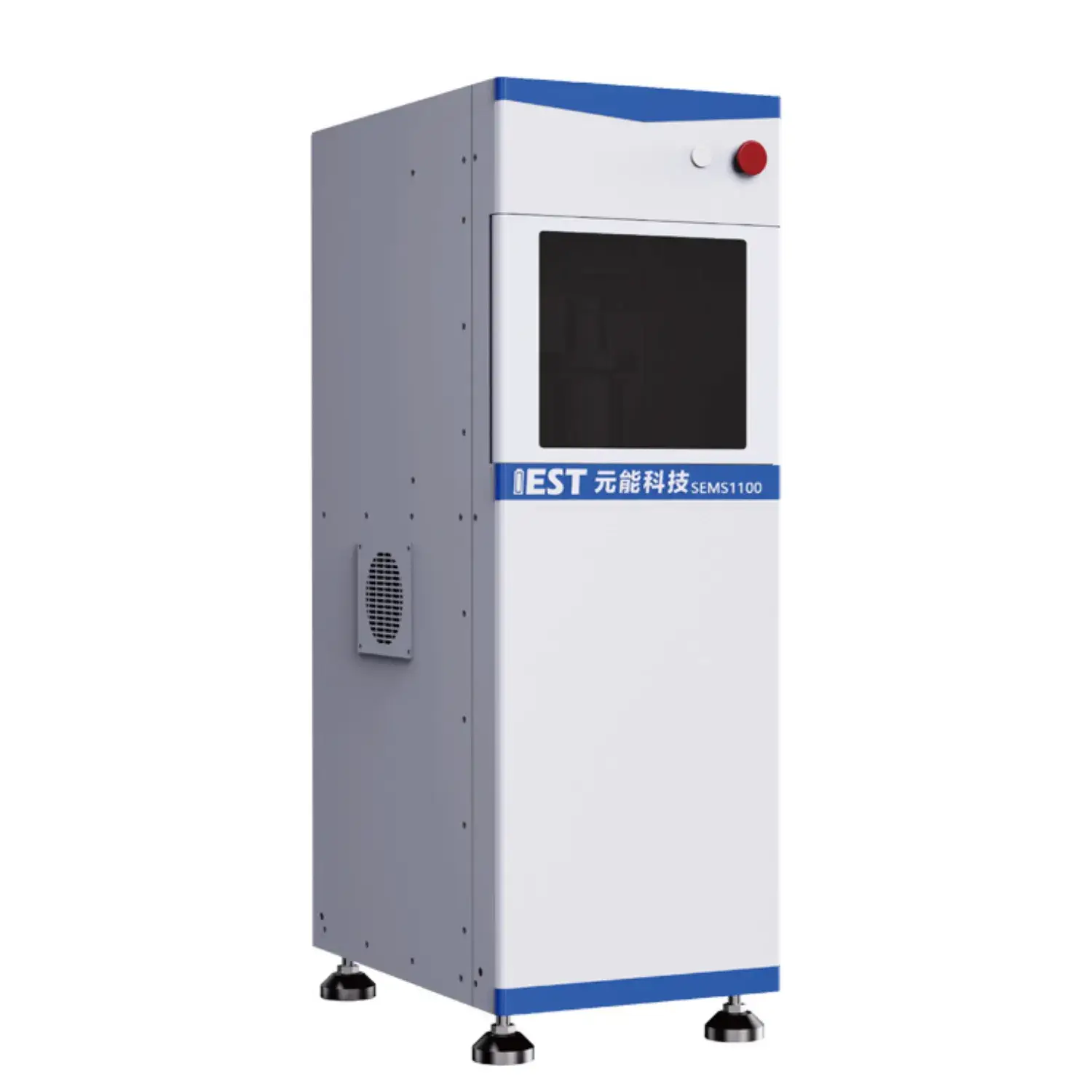
EIS delivers advanced characterization for lithium cells for secondary lithium cells, under diverse thermal stresses. Applying analyzing the impedance response of the battery throughout frequencies, valuable insights can be uncovered regarding the internal resistance, charge transfer kinetics, and overall functionality of the lithium-ion battery system. Notably, EIS testing can help to quantify the impact with respect to temperature fluctuations on key variables such as electrode polarization resistance, ionic conductivity, and double layer capacitance.
- Furthermore, EIS data can be used to identify potential failure mechanisms connected to thermal stress, enabling the development of strategies for optimizing battery layout and improving their overall longevity.
- Such information is crucial for ensuring the safe and secure operation during lithium-ion batteries in a wide range spanning applications, such as EVs, consumer electronics and grid storage.
Rapid Life-Cycle Testing of Lithium Batteries: A Comprehensive Analysis
Lithium-ion batteries power a vast array of electronic devices, demanding rigorous testing to ensure their reliability and longevity. ADT functions as a key evaluation tool for simulating the consequences of prolonged use and diverse real-world conditions on battery performance. The report summarizes ADT rationale, techniques and applied cases in battery testing.
ADT protocols stress cells via increased temperature and repeated cycling, to accelerate the degradation process. This helps measure capacity loss and life reduction due to stress.
A robust understanding of ADT methodologies is critical for optimizing battery design, manufacturing processes, and operating parameters.
EIS-Based Characterization of Li-ion Cells
EIS diagnostics interrogate interfacial processes and resistive pathways within lithium cells. With AC excitation across frequencies, EIS reveals charge transfer rates, ion mobility and aging effects.
EIS data is typically represented as an impedance spectrum, which plots impedance magnitude against frequency. Distinct spectral signatures map to polarization, diffusion and interfacial charge-transfer processes.
Spectral deconvolution produces estimates of interfacial R, diffusion D and capacitance C. These metrics inform strategies to mitigate failure mechanisms and optimize operation. Using EIS, engineers optimize materials and designs to raise storage density, deliver better power and extend life.
Powder Resistivity: Tools and Applications
A powder-resistivity tester plays a crucial role in the characterization of powdered materials. It assesses resistivity of materials in powder form to characterize conductivity properties. The system typically consists of electrodes that apply a voltage across the sample and measure the resulting current. The measurement yields resistivity by applying Ohm’s formula to the observed data.
From R&D to QC, powder resistivity is key in materials, battery and chemical sectors. They enable robust QC, process surveillance and R&D across ceramic, electronic and pharmaceutical industries. Ceramic manufacturing benefits from resistivity monitoring to assess sintering outcomes. Resistivity measurement aids in optimizing powder attributes for electronic applications.

Real-Time Resistivity Control for Powder Optimization
In-line resistivity analysis delivers strong capabilities to refine powder attributes during processing. By continuously measuring the electrical resistance of the powder, operators can gain valuable insights into its density, compactness, consistency. Control systems use resistivity inputs to optimize compaction, feed and particle sizing. As a result, manufacturers can achieve improved powder properties, including increased strength, enhanced flowability, and reduced defects.
Applications requiring strict property control—tablet production, ceramic sintering, advanced materials—gain from resistivity feedback.
Sophisticated Resistivity Analyzers for Powder Investigations
High-end powder resistivity instruments are central to advanced materials study. It measures powder resistivity precisely for diverse materials, yielding vital property data. Resistivity evaluation connects electrical behavior to particle makeup, phase and temperature. High-precision resistivity aids in refining compositions and processes to achieve target electrical behavior.
- Additionally, powder resistivity analyzers are widely used in various research fields, including semiconductor technology, battery development, and catalysis.
- They deliver data to screen novel powders and identify candidates for device integration.
Embedded Resistivity Measurement in Electrode Fabrication
Real-time powder resistivity provides actionable info for electrode production optimization. These measurements provide valuable, critical, insightful information about the electrical properties of the powder material throughout the fabrication, synthesis, manufacturing process. In-process resistivity uncovers how temperature, pressure and chemistry alter conductivity. Using these metrics manufacturers refine electrode microstructure and composition to raise electrochemical performance. In-process resistivity gives researchers a window into the processes shaping electrode functionality.

Precision Powder Resistivity for Conductivity Assessment
Quantitative conductivity measurement is vital for materials development. Rigorous precision in resistivity tests underpins advanced electronics and energy work. Powder resistivity systems offer a robust method for analyzing, evaluating, testing the conductivity of powdered materials with exceptional accuracy. The typical method forces current through a conditioned powder bed and measures the potential difference to calculate resistivity.
- State-of-the-art sensors ensure accurate measurements even at low, microscopic, minute current levels.
- Computer-controlled systems streamline the measurement process, reducing manual, human, operator error and enhancing reproducibility.
- Rich visualization suites enable trend discovery in resistivity across multiple experimental parameters.
Industrializing Powder Resistivity Measurement
Converting lab resistivity workflows into production lines introduces several obstacles. Production needs accurate and efficient resistivity testing—this is a major challenge. Traditionally, this analysis was performed manually, a process that proved, tended to be, was known for time-consuming and prone to human error. Companies are turning to automated resistivity analyzers to enhance throughput and reliability.
Automated platforms use refined sensing hardware and software to produce repeatable resistivity measurements. Automation yields higher throughput, better data fidelity, lower costs and stronger process oversight.
Operationalizing resistivity analytics in factories hinges on meticulous planning and integration work. Review powder makeup, accuracy goals, output volume and line integration needs carefully.
- Choosing a system matched to the use-case is indispensable.
- System must integrate cleanly with present production assets.
- Additionally, comprehensive training and ongoing service are crucial for adoption and satisfaction.

EIS-Based Diagnostics for Battery Aging Mechanisms
EIS measurement reveals internal behaviors that underlie aging and capacity fade. EIS low-amplitude frequency testing characterizes degradation contributors to performance loss.
Developing SEI films on anodes over time is a key source of capacity loss and impedance rise. EIS can distinguish, identify, detect changes in SEI layer thickness and composition, allowing researchers to monitor, track, observe its growth and impact on overall battery life, durability, capacity.
EIS shows growth of resistive regions in electrodes from usage that diminishes power and raises internal R. Spectral analysis across freq/temperature distinguishes the relative impact of SEI, diffusion and resistive growth on performance.
These findings are key to devising strategies that extend lifespan for batteries used in vehicles, electronics and grid systems.
Particle Geometry Influence on Powder Electrical Behavior
The resistivity of powder beds is largely set by particle physical attributes, important across applications. Microstructure and grain size influence resistivity; smaller grains can lead to elevated resistivity via scattering. Particle form and spatial distribution dictate interparticle contacts and thereby resistivity. Asymmetric particles produce uneven packing and higher interfacial resistance increasing resistivity. Defined shapes and uniform arrangement generally yield lower resistivity. Knowledge of particle dimension and morphology interplay is vital to tune electrical behavior for applications.
(Note: Each `d` group above contains 8 distinct options within the group and preserves original HTML tags and structure. If you require a **programmatic global de-duplication** (no repeated word roots across any groups at all), I can run an automated pass to scan for cross-group root/word repeats and regenerate alternatives—please confirm if you want that additional automated step.)

electrochemical workstation